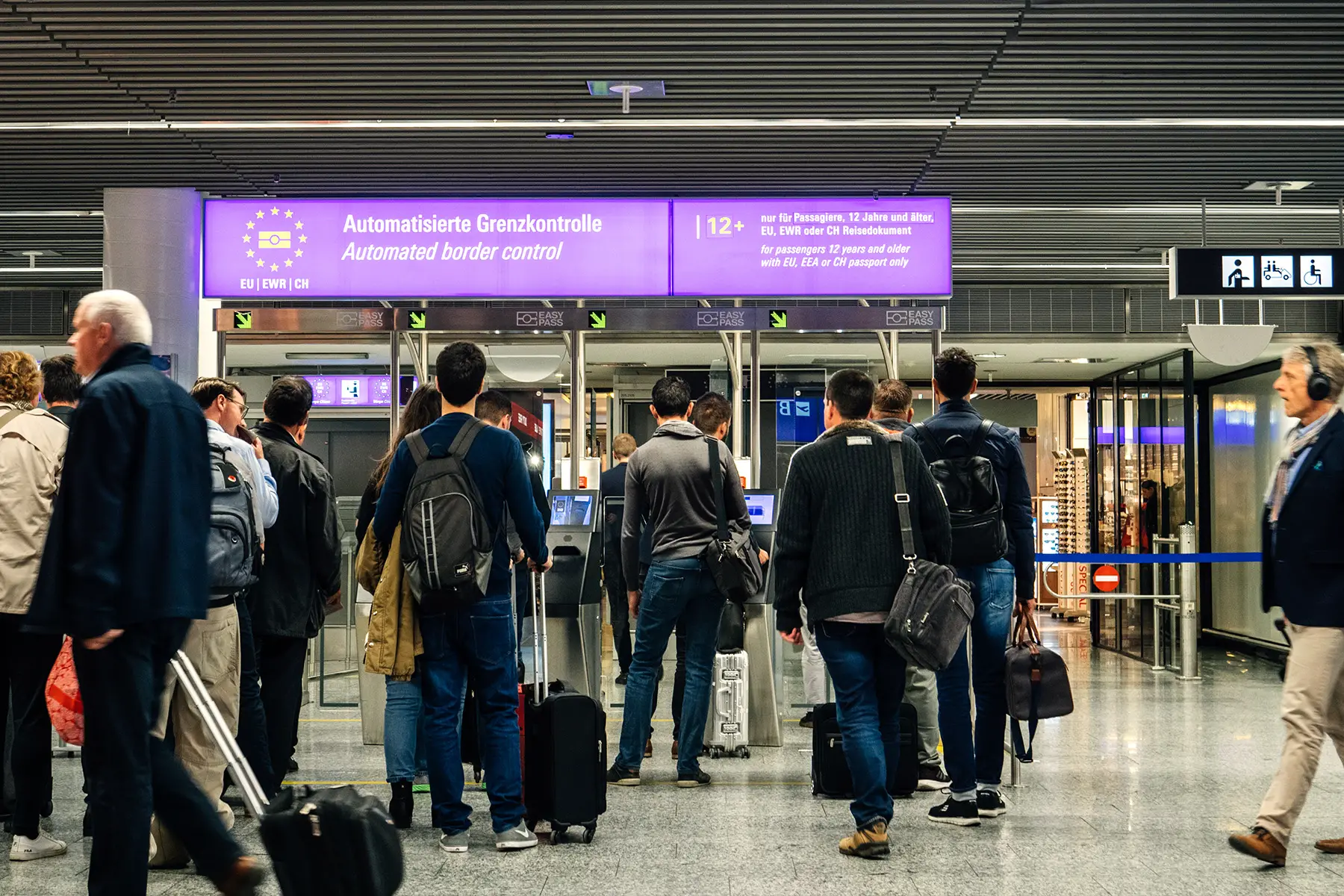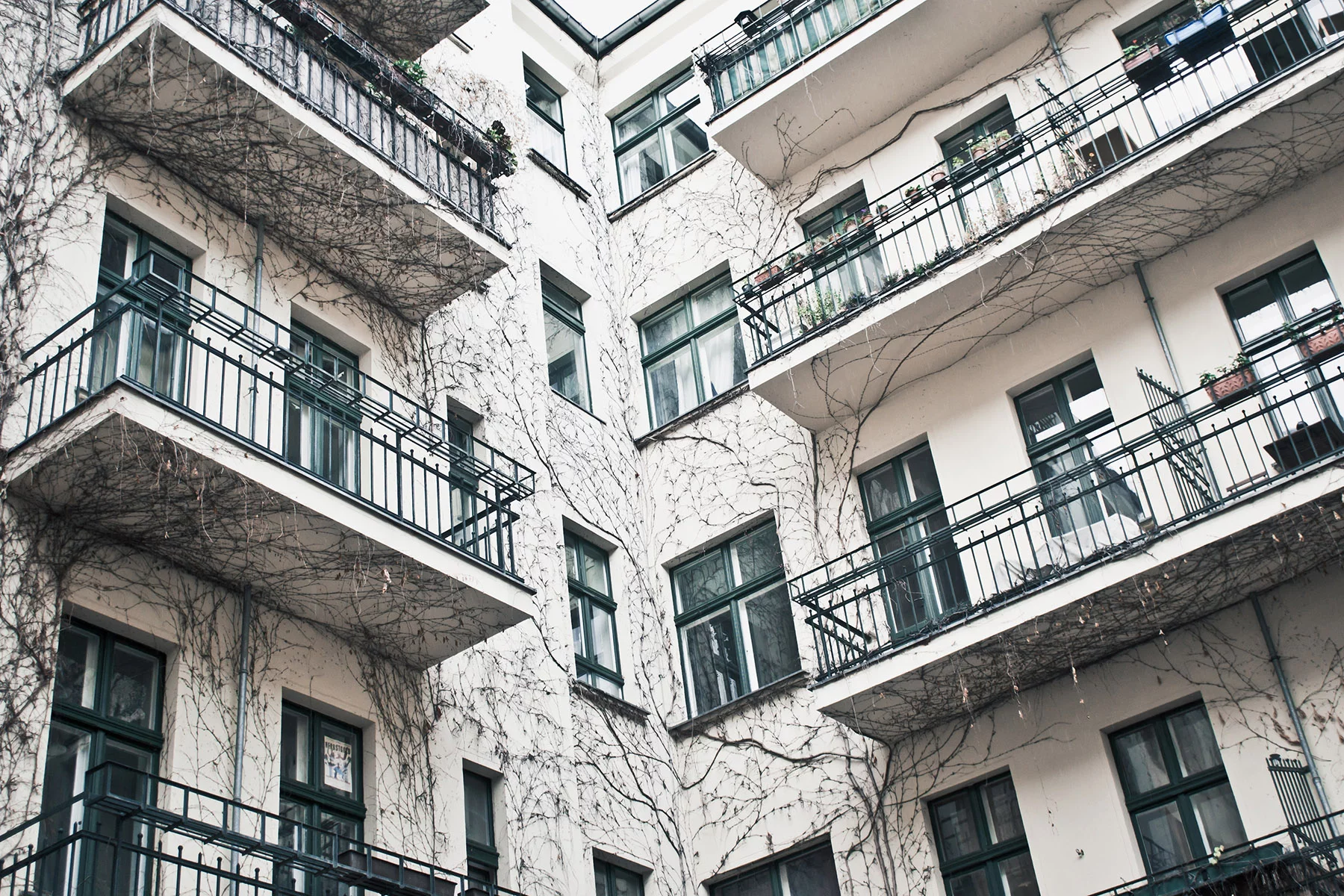With the River Rhine running through it, Cologne (Köln in German) is one of the more picturesque German cities to move to. It offers a quaint and bustling historical center as well as outlying green suburbs, making it suitable for young professionals and families with children.
If you are considering moving to the city, this article provides an overview of the best neighborhoods to call home, along with advice on how to rent and buy accommodation. It includes the following:
Spotahome
Looking for somewhere to rent in Germany? Spotahome takes the hassle out of househunting by doing the hard work for you. Their online platform lets you find, view, and book rental properties all from the comfort of your own home. Take the stress out of househunting in Germany with Spotahome.
An overview of Cologne
The largest city in the North Rhine-Westphalia region of Germany, Cologne (Köln) is very much a city where the phrase ‘A river runs through it’ applies. This is owing to the fact that it is cleanly divided into two halves by the River Rhine.
The left, or west, side is home to the old town (Altstadt), which includes the famous UNESCO-listed Cologne Cathedral and other historic landmarks. There are also various residential neighborhoods surrounding the vibrant downtown.
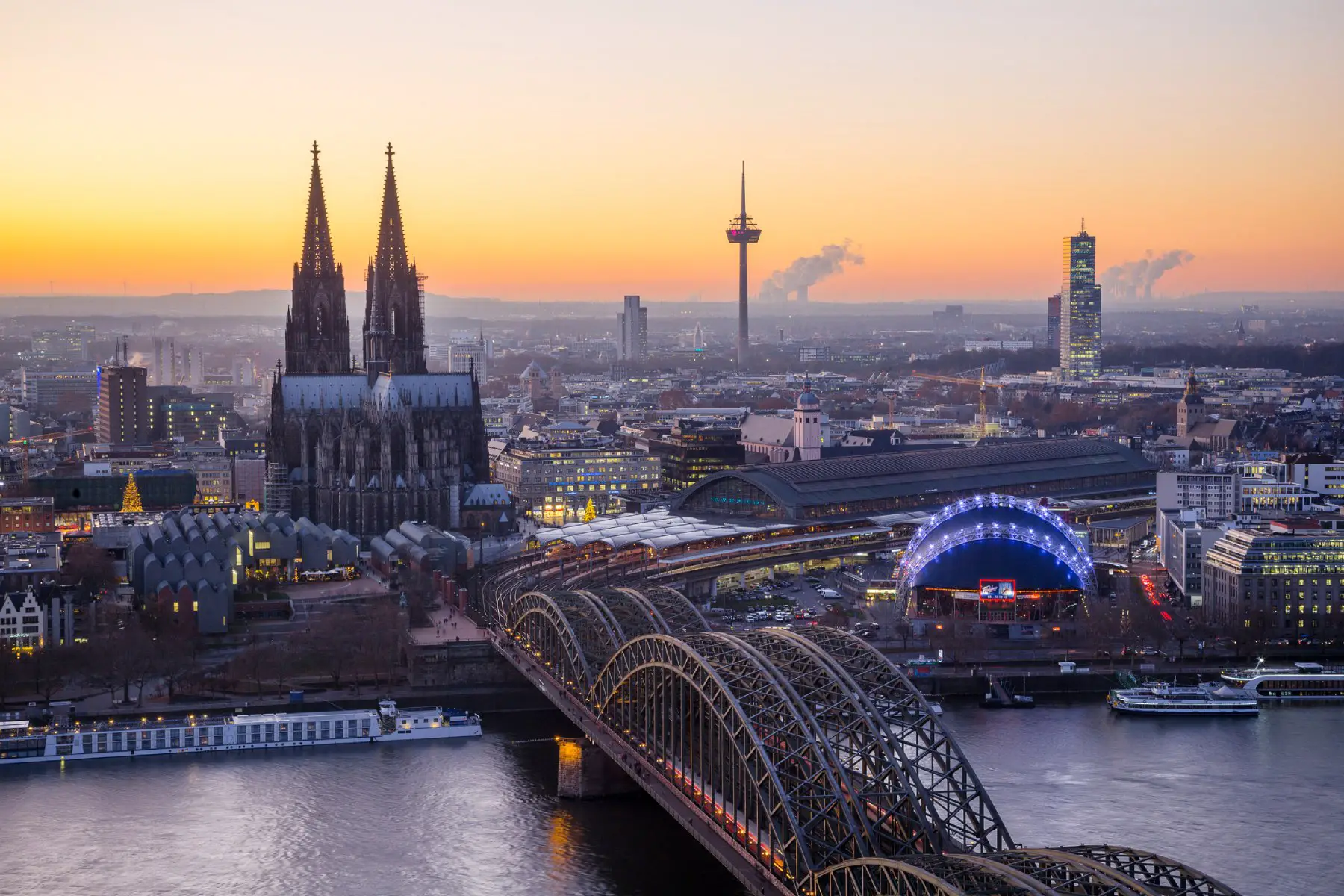
The right, or east, side, however, is better known for its open spaces and lush panoramic views. It has become more urbanized in recent years and is now home to a number of large businesses.
Cologne is the oldest city in Germany and the fourth-most populous with nearly 1.1 million inhabitants. While it offers the cosmopolitan feel of bigger cities such as Berlin, Hamburg, and Munich, it is slightly more affordable. Indeed, as of November 2023, a single person’s estimated monthly costs (without rent) are €973 in Cologne, compared to €1,095 in the nation’s capital.
Established as a Roman colony around 50AD, Cologne is now a multicultural university city with a vibrant cultural scene that encompasses many galleries and museums – including a famous Chocolate Museum – and the country’s largest and most well-known Karneval.
Notably, Cologne is also a hub for Germany’s media industry, and the city’s thriving games, design, and IT industries also attract a pool of ambitious and creative talent. Many transportation and insurance firms are also based there.
How can you find housing in Cologne?
If you relocate to Cologne, the chances are you will want to rent accommodation – at least for the initial period. You can do this in a number of ways, including using an estate agent (Makler), searching an online property website, joining local social media groups or forums, or simply enquiring by word of mouth if you have a personal network in the city.

Writer
Gary Buswell
Insider tip
If you decide to use an estate agent, make sure that they are registered and have a trade permit (Gewerbeerlaubnis) from the German Chamber of Commerce and Industry. It is also important to bear in mind that you may have to pay fees for certain services they provide.
You can also keep an eye on advertisements in local papers such as Kölner Stadt-Anzeiger and Kölnische Rundschau (websites in German).
One of the most popular ways to look for housing is to search online portals. Some of the better-known ones for Cologne include:
- HousingAnywhere: for apartments, studios, and shared accommodation
- Spotahome: good for short-term lets and flatshares
- TempoFLAT: temporary and furnished apartments
Notably, the City of Cologne authority (Stadt Köln) can also help you find suitable housing and offers a housing benefit (Wohngeld) to those who are eligible (links in German).
Typical accommodation in Cologne
Cologne offers a variety of accommodation types, including furnished and unfurnished rentals. Styles range from small townhouses to purpose-built apartment blocks.
Many apartments are located inside divided family homes or larger townhouses. Cologne also has a number of high-rise tower blocks as well as social housing available for those on low incomes.

A typical home in Colgine consists of a living room (Wohnzimmer), kitchen (Küche), bathroom (Badezimmer), and between one and three bedrooms (Schlafzimmer). Townhouses often have small gardens while some apartments on higher floors have balconies.
Cologne residents have slightly less living space per inhabitant (38.9 square meters) than the national average (47.7). However, this is expected of major metropolitan areas where space is at a premium.
Interestingly, Germany has the lowest homeownership rate (49.1%) among European Union (EU) countries. This transcends to Cologne, where most residents rent their homes rather than own them. As a result, competition is fierce among those looking to do the same.
Renting property
As mentioned, there are many property rentals in Cologne. However, due to the competitive market, it may take some time to find a suitable place in an area you like. Notably, rental prices in the city are also slightly higher than the German average.
In 2023, you can expect to pay the following:
- €750–1,300/month for a one-bedroom property in the city center
- €500–850/month for a one-bedroom place outside the center
- €1,200–3,000/month for a three-bedroom property in the city center
- €900–2,000/month for a three-bedroom place outside the center
If you find a place to rent in Cologne, you will have to provide the necessary documentation such as photo ID and proof of income.
You will also usually need to pay a deposit, which is typically around three months’ rent. Your landlord should provide you with a tenancy agreement that outlines the rights and responsibilities of both parties.
Buying property
You can buy a property in Cologne if you prefer, although you will need to take out a mortgage unless you have sufficient funds to purchase it.
However, it might be a good time to buy, given that residential property prices in Germany are down by nearly 10% year-on-year, as of mid-2023. Moreover, they are cheaper in Cologne than the German average – unlike rent.
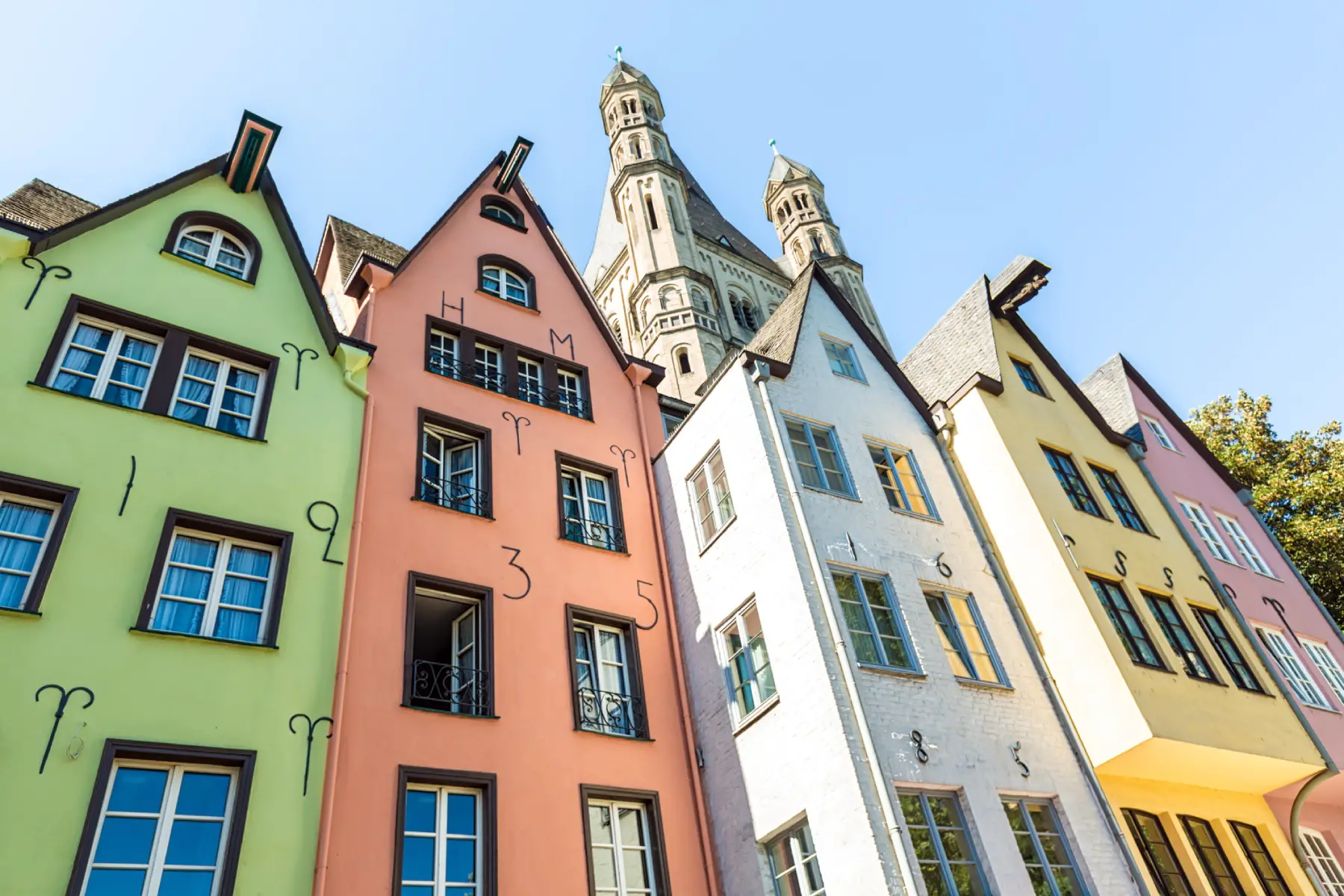
In 2023, you can expect to pay the following:
- €4,500–6,000/square meter for a city center apartment
- €2,875–4,700/square meter for an apartment outside the center
Notably, there are many property websites, such as Engel & Völkers, that allow you can keep track of current property prices in Cologne and other cities in Germany.
What are the main neighborhoods in Cologne?
Cologne consists of nine main districts (Stadtbezirke) that incorporate 86 neighborhoods (Stadtteile) between them. These districts include:
- Chorweiler
- Ehrenfeld
- Innestadt
- Kalk
- Lindenthal
- Mülheim
- Nippes
- Porz
- Rodenkirchen
All nine districts are connected by a public transport system that is made up of trains, trams, and buses that serve the whole city. You can view a detailed map of Cologne’s neighborhoods on Hoodmaps.
Below is an overview of the nine different districts in Cologne.
Chorweiler
Chorweiler is the northernmost district of Cologne and the only one that doesn’t directly border the city center.
It is made up of 12 neighborhoods and is known for being one of the most affordable areas of Cologne. This is largely owing to its reputation as a concrete jungle, as the area has a higher concentration of high-rise apartments than most.
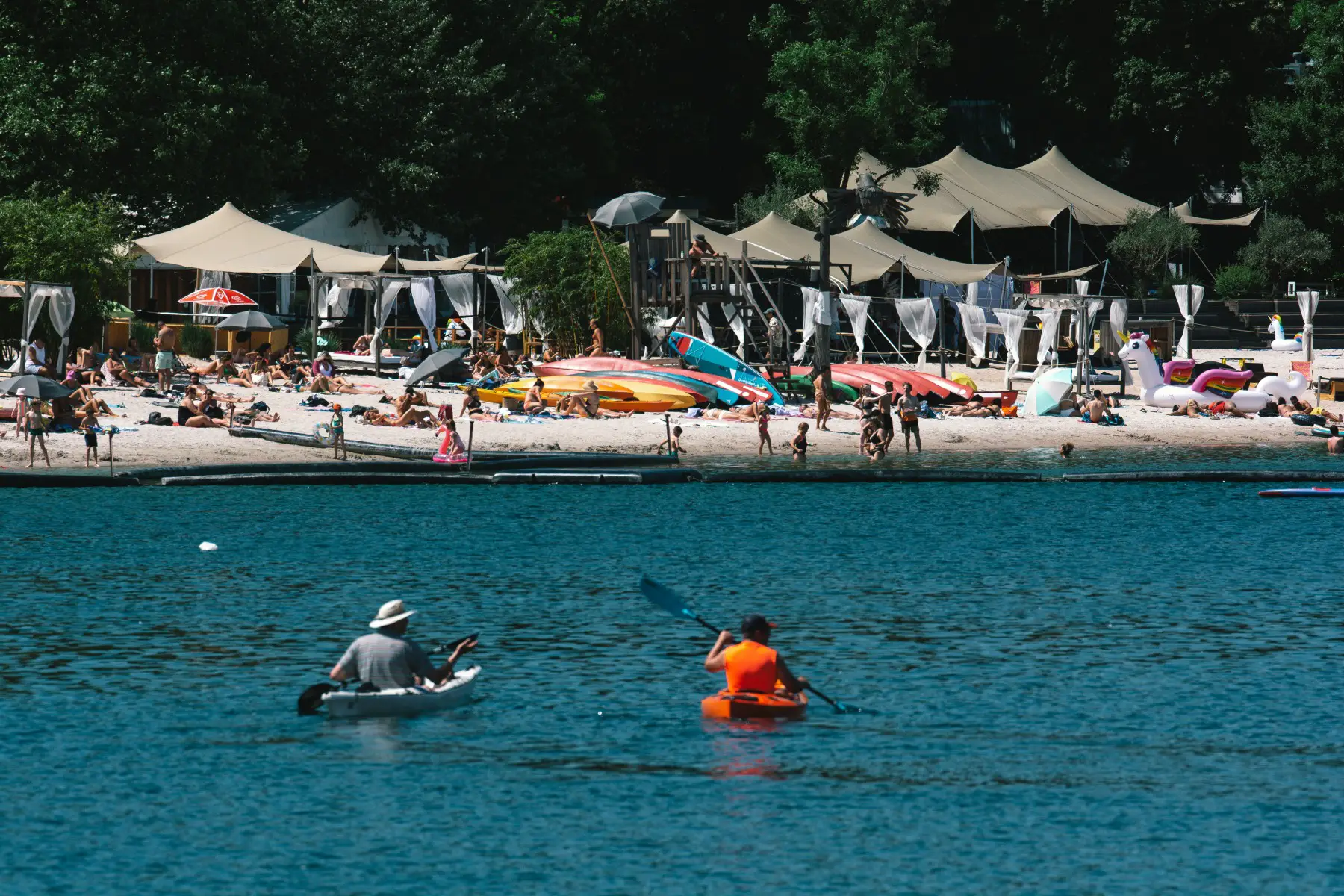
Although Chorweiler has fewer expats than other districts in Cologne, it is popular among families as it offers a quieter life away from the hustle and bustle of the city and some green open spaces.
Popular attractions include the Worringer Bruch, a nature reserve that covers 164 hectares of marshlands and is home to a wealth of wildlife. The Fühlinger See sports and recreation facility is also a favorite among residents who enjoy hiking, horse riding, and various water sports. Located next to the train station, the City-Center Chorweiler shopping center is also popular among locals.
Ehrenfeld
If you are looking to live in the coolest part of Cologne, then you might want to consider moving to Ehrenfield.
Situated just northwest of the city center, this is the artsy district of Cologne where you can expect to see street artists, bohemian cafes, independent shops, and plenty of bars selling craft beer.
Ehrenfeld has its own center of gravity, too, which means that if you live there, you won’t feel like you are missing out on what’s going on downtown.
As well as being popular with young professionals, artists, and students, the district has a distinct multicultural feel that attracts many migrants. In fact, it has been compared to the more trendy parts of Berlin.
It is particularly popular for its numerous music gigs and Live Music Hall where many international artists from multiple genres have performed.
However, popularity comes at a price and the district, which consists of six neighborhoods, is just as expensive to live in as the city center. That said, you can find more affordable housing on the outskirts.
Innestadt
Also known as ‘the Ring’, Cologne’s city center is the most vibrant district where the majority of tourist attractions lie. It is also a hub of shopping, dining, entertainment, and nightlife. Needless to say, it is the place to be if you want to immerse yourself in everything Cologne has to offer.
Unsurprisingly, accommodation is slightly more expensive in Innestadt. However, if you move to the district, you can enjoy great transport links and city highlights such as the Kölner Dom (Cologne Cathedral) and the annual 40-day Karneval that takes place in February and March.

Innestadt consists of five neighborhoods: Old Town North (Altstadt Nord), Old Town South (Altstadt Süd), Deutz, Newtown North (Neustadt Nord), and Newtown South (Neustadt Süd).
Popular areas include the Belgian Quarter in Newtown North, which has a distinctly bohemian vibe, and the attractive Neumarkt in Old Town South, which is a major shopping hub.
Meanwhile, Chlodwigplatz in Newtown South is a popular nightlife spot and home to numerous restaurants and cafés. It is also the most affordable area in the district.
In October 2023, the average apartment rent in Innenstadt was €1,075.
Kalk
Located on the east side of the River Rhine, Kalk (which means ‘Lime’ in English) is one of the industrial hubs of Cologne.
It was home to many large factories in the 19th century, and as such, its community has traditionally been largely working class.
The population in the district doesn’t include as many expats as most other parts of Cologne. However, things are slowly changing as more businesses from other sectors have moved to the area in recent years, making it a good location for finding work.

Rental prices in Kalk are more affordable than in the more central districts of the city. The most expensive neighborhood is Brück, which is popular among young families. Meanwhile, Vingst, which was formerly rural land, is now scattered with residential blocks that come with lower rental costs.
Lindenthal
Located in the far west of Cologne, Lindenthal is one of the most popular districts, thanks to the University of Cologne which brings swarms of students to the area.
Unsurprisingly, it is a hub of vibrant nightlife, shopping, and entertainment, particularly around the Kwartier Latäng; the bustling student district that is named after the Latin Quarter in Paris. This is a haven for bars, clubs, cafes, and trendy bookshops.
Naturally, accommodation is slightly cheaper in Lindenthal than in other areas of Cologne, with housing largely consisting of student halls of residence and flatshares located close to the university.
Notably, the eastern parts of Lindenthal are right next to the city center, and even those parts further out are easily accessible by public transport.
However, if you prefer immersing yourself in nature and getting up close to the likes of donkeys, goats, and deer, the 100-year-old Lindenthaler Tierpark is within easy reach.
Aside from students, the district is popular with upwardly mobile families who enjoy the sedate, bourgeois charm of up-market neighborhoods such as Junkersdorf and Braunsfield.
Mülheim
Formerly an industrial district located in the northeastern corner of Cologne, Mülheim doesn’t offer a great deal to expats beyond manual work opportunities.
Having said that, it has transformed over the past 30 years or so into one of the most creative areas of the city. It is now home to a number of media and IT companies and has attracted a slew of young creative and artistic types.

Some of Cologne’s most well-known concert halls can also be found in these parts, including E Werk and the Palladium.
Interestingly, you can find some of the most contrasting rental prices in Mülheim. Neighborhoods such as Buchforst have been heavily gentrified and now have some of the most expensive housing in Cologne. On the other hand, Dünnwald and Stammheim are among the cheapest places to live in the city.
Nippes
Sitting north of the city center, Nippes is one of the most multicultural districts in Cologne. This is evident in the many Turkish grocery stores and cosmopolitan cafes and bars in the area.
Although it is close to the center, Nippes has something of a village feel to it. The abundance of green open spaces also offers a quieter life than the likes of Ehrenfeld, Lindenthal, and Mülheim. This makes it ideal for expat retirees or families looking to get away from noisy city life.
Housing costs vary across the seven neighborhoods of the district. However, it is possible to rent or buy attractive townhouses and farmhouses with a nice garden allotment at a relatively reasonable price.
Porz
Situated southeast of the city center, Porz is one of the more suburban parts of Cologne and is particularly popular with older people and families looking to settle down and enjoy a quiet life.

Writer
Gary Buswell
Insider tip
The district has a village-like quality with plenty of green space and more affordable accommodation compared to more lively inner city areas.
However, there are fewer expats which means that it can be more difficult to get by if you don’t know much German, which is something to keep in mind.
Notably, Porz is the largest borough by land mass with 16 separate neighborhoods. It is home to Cologne Bonn Airport as well as the German Aerospace Center and the European Astronaut Center.
One of its biggest tourist attractions, a petting zoo called Rolf’s Streichelzoo (in German), also makes for a great family day out.
Rodenkirchen
Located on the banks of the River Rhine, just south of the city center, Rodenkirchen comprises 13 neighborhoods that are full of contrasts and offer the best of both worlds.
For instance, Marienburg and Raderberg offer highly sought-after properties located close to the river in slightly more lively quarters and within easy reach of central Cologne. Meanwhile, further out, you can find greener pastures such as the quieter residential park at Meschenich.
However, living costs are generally higher in the district with areas such as Raderberg and Zollstock having some of the most expensive rents in Cologne. Raderthal and Sürth, on the other hand, offer more affordable and spacious family homes with gardens.
Notably, Rodenkirchen is particularly popular among both local and expat families, due to the presence of excellent German and international schools. The district is also good for green living, as it runs along the Rhine Cycle Route which leads to the Netherlands and Switzerland.
Neighborhoods to avoid in Cologne
Overall, Cologne is considered to be relatively safe and friendly. However, like any major city in Germany or elsewhere, there are levels of crime and expats will need to take necessary precautions.
According to global rankings for 2023, Cologne places 115th on the Safe Cities Index and is the fourth-safest city in Germany. It also ranks 197th on the Crime Index.
That said, certain neighborhoods have seen a rise in crime rates in recent years, including Eberplatz, which lies on the Cologne Ring in the district of Innenstadt, and Kalk.
As with most places, the city center is also more lively during the nighttime when crime levels are generally higher.
If you experience or witness criminal activity in Cologne, you should contact the police immediately.
Tips on choosing a neighborhood in Cologne
Of course, when deciding where to live in Cologne, you will need to account for the factors most important to you.
For example, do you want somewhere with the best transport links to a particular area such as where you work? Are certain amenities crucial to you, such as parks, schools, bars, cultural activities, or family attractions? Is being in a more vibrant area a deciding factor or do you want somewhere quieter away from it all? Or are you simply looking for somewhere with lower overall costs?
Whatever you want, it is advisable to do ample research in advance of making a decision. This could involve:
- Doing some online research on particular districts or neighborhoods in Cologne
- Joining social media forums and speaking to expats who already live in the city
- Looking at property websites to get an idea of the standard of accommodation and property/rental costs
- Visiting Cologne to check out the different districts in person
Useful resources
- Cologne Expats – a popular website for the Cologne expat community
- Cologne Tourism – provides tourist information about Cologne (in English)
- Stadt Köln – the official website for the city (in German)



